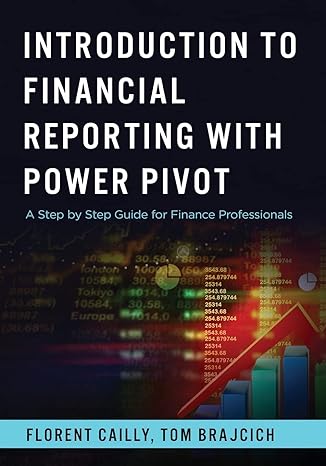Answered step by step
Verified Expert Solution
Question
1 Approved Answer
The comparative statements of Sunland Company are presented here: SUNLAND COMPANY Income Statements For the Years Ended December 31 2022 2021 Net sales $1,898,440 $1,758,400
The comparative statements of Sunland Company are presented here: SUNLAND COMPANY Income Statements For the Years Ended December 31 2022 2021 Net sales $1,898,440 $1,758,400 Cost of goods sold 1,066,440 1,013,900 Gross profit 832,000 744,500 Selling and administrative expenses 507,900 486,900 Income from operations 324,100 257,600 Other expenses and losses Interest expense 23,900 21,900 Income before income taxes 300,200 235,700 Income tax expense Net income Assets 93,900 74,900 $206,300 $160,800 SUNLAND COMPANY Balance Sheets December 31 2022 2021 Current assets Cash $60,100 $64,200 Debt investments (short-term) 74,000 50,000 Accounts receivable 125,700 110,700 Inventory 127,900 117,400 Total current assets 387,700 342,300 Plant assets (net) Total assets Liabilities and Stockholders' Equity Current liabilities Accounts payable 661,000 532,300 $1,048,700 $874,600 $167,900 $153,300 Income taxes payable 45,400 43,900 Total current liabilities 213,300 197,200 Bonds payable 232,000 212,000 Total liabilities 445,300 409,200 Stockholders' equity Common stock ($5 par) 290,000 300,000 Retained earnings 313,400 165,400 Total stockholders' equity 603,400 465,400 Total liabilities and stockholders' equity $1,048,700 $874,600 All sales were on account. Net cash provided by operating activities for 2022 was $236,000. Capital expenditures were $135,000, and cash dividends were $58,300. Compute the following ratios for 2022. (Round earnings per share, current ratio and asset turnover to 2 decimal places, e.g. 1.83. Round return on common stockholders' equity, return on assets, accounts receivable turnover, average collection period, inventory turnover, days in inventory, times interest earned and debt to assets ratio to 1 decimal places, e.g. 1.8 or 1.8%. Use 365 days for calculation.) (a) Earnings per share (b) Return on common stockholders' equity (c) Return on assets (d) Current ratio $ % % :1 (e) Accounts receivable turnover (f) Average collection period (g) Inventory turnover (h) Days in inventory (i) Times interest earned (j) Asset turnover (k) Debt to assets ratio Free cash flow $ times days times days times times %
Step by Step Solution
There are 3 Steps involved in it
Step: 1

Get Instant Access to Expert-Tailored Solutions
See step-by-step solutions with expert insights and AI powered tools for academic success
Step: 2

Step: 3

Ace Your Homework with AI
Get the answers you need in no time with our AI-driven, step-by-step assistance
Get Started


